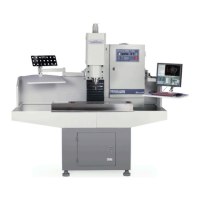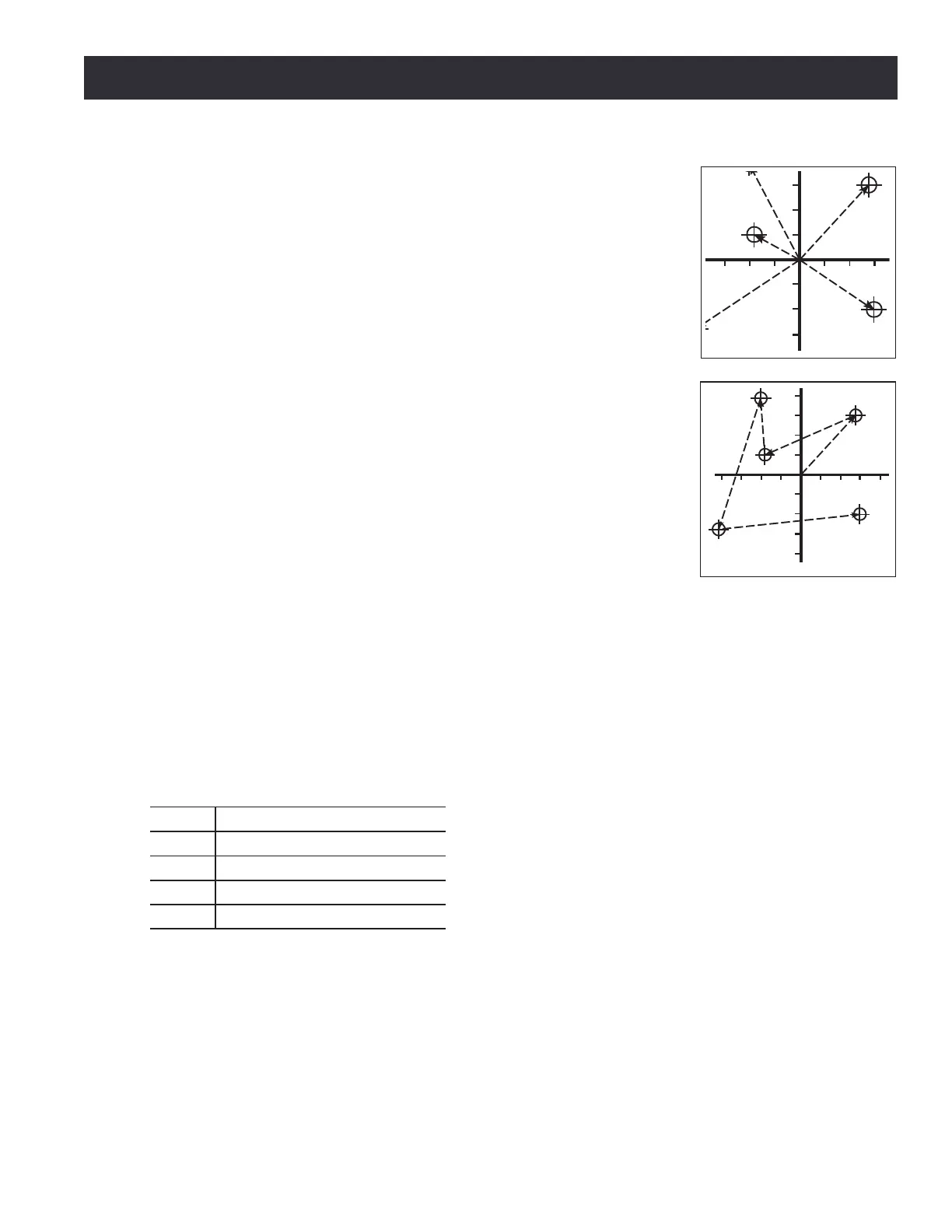Chapter 7
123
UM10349_PCNC1100_Manual_0916A
Programming
7.6.2.8 Distance Mode – G90 and G91
Interpretaon of the operang system-code can be in one of two distance
modes: absolute (see Figure 7.6) or incremental (see Figure 7.7).
To go into absolute distance mode, program: G90. In absolute distance
mode, axis numbers (X, Y, Z, A) usually represent posions in terms of
the currently acve coordinate system. Any excepons to that rule are
described explicitly in this secon.
To go into incremental distance mode, program: G91. In incremental
distance mode, axis numbers (X, Y, Z, A) usually represent increments
from the current values of the numbers. I and J numbers always
represent increments, regardless of the distance mode seng. K
numbers represent increments.
7.6.2.9 Arc Distance Mode – G90.1, G91.1
G90.1 – Absolute distance mode for I, and K osets. When G90.1 is in eect I and K both must be
specied with G02/3 for the XZ plane or it is an error.
G91.1 – Incremental distance mode for I, and K osets. G91.1 Returns I and K to their default
behavior.
7.6.2.10 Temporary Work Offsets – G92, G92.1, G92.2 and G92.3
To apply a temporary work oset, program: G92 X~ Y~ Z~ A~
Word Denition
X~
X-axis coordinate
Y~ Y-axis coordinate
Z~ Z-axis coordinate
A~ A-axis coordinate
This is a legacy feature. Most modern programming methods do not use temporary work osets.
G92 reassigns the current controlled point to the coordinates specied by the axis words (X~, Y~,Z~,
and/or A~). No moon takes place.
The axis words are oponal, except that at least one must be used. If an axis word is not used for
a given axis, the coordinate on that axis of the current point is not changed. Incremental distance
mode (G91) has no eect on the acon of G92.
Figure 7.6
Figure 7.7

